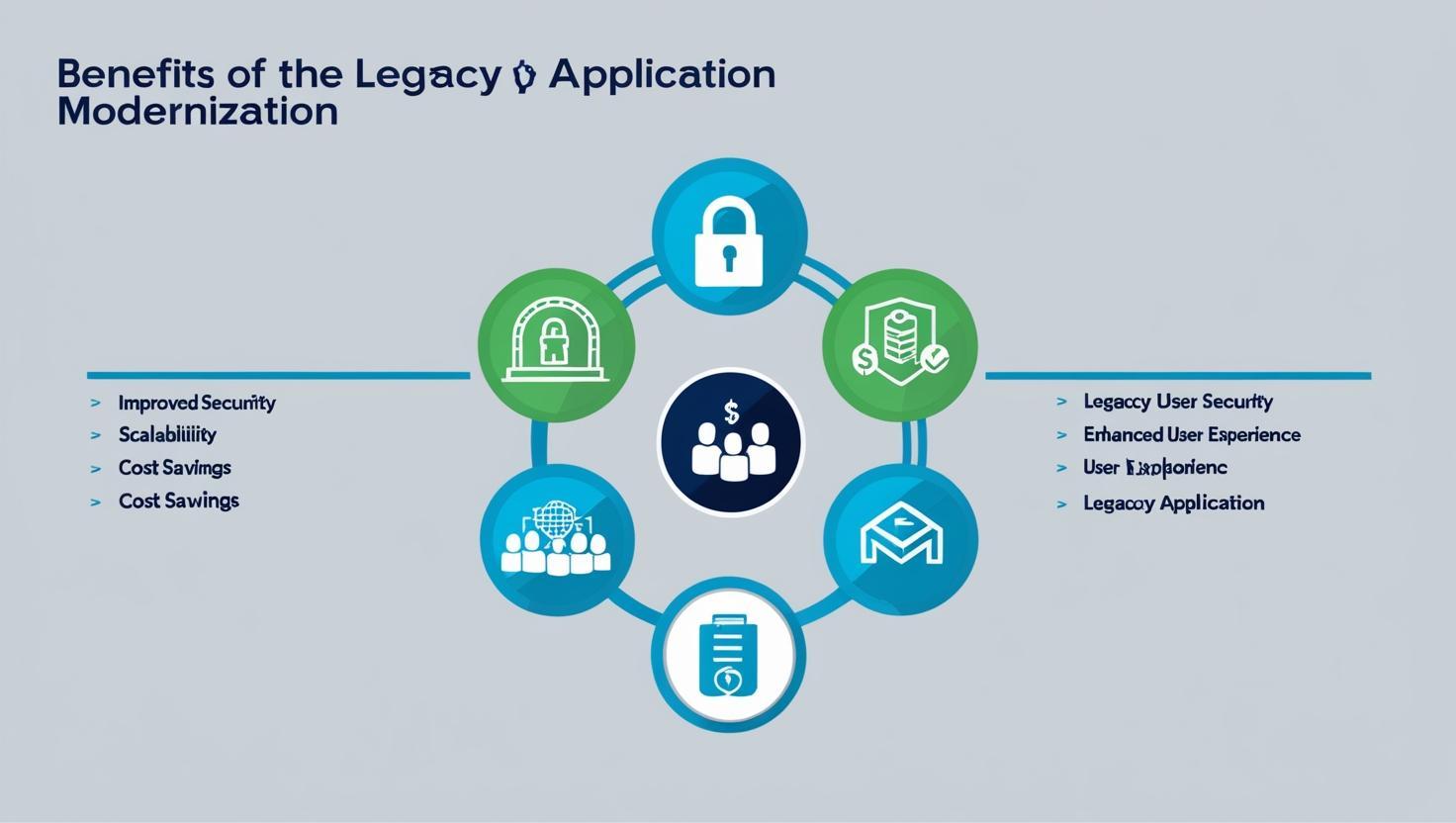Many organizations still rely on old software—known as legacy applications—to handle their daily operations. These systems may have served well in the past, but as technology evolves, legacy apps often become more of a burden than a benefit. They can slow down productivity, increase costs, and create security risks.
That’s where legacy application modernization comes in. By upgrading or transforming these outdated systems, businesses can align themselves with modern technology, increase efficiency, and stay competitive in a fast-moving world.
In this blog, we’ll walk you through the benefits of modernizing legacy apps and why it’s a smart move for future-focused businesses.
What Are Legacy Applications?
Legacy applications are old software systems built on outdated technologies that are still in use. These apps may still perform essential business functions, but they usually have:
-
Old user interfaces
-
Poor compatibility with modern tools
-
Higher maintenance costs
-
Security vulnerabilities
-
Limited scalability
Examples include systems developed in early programming languages like COBOL or running on mainframes or outdated servers.
What Is Legacy Application Modernization?
Modernization is the process of updating a legacy application’s platform, architecture, and functionality to meet current business needs. This doesn’t always mean starting from scratch. Depending on the situation, modernization can involve:
-
Migrating to the cloud
-
Rewriting parts of the code
-
Improving the user interface
-
Enhancing integration with modern tools
-
Adopting microservices or containerization
The goal is to make the software faster, more secure, and easier to manage.
Why Modernize Legacy Applications?
Let’s explore the most compelling reasons to modernize legacy apps:
1. Improved Performance and Speed
Old systems often struggle to keep up with increasing workloads and user demands. Modernized applications can handle more data, respond faster, and run more efficiently. This means better experiences for both employees and customers.
2. Lower Maintenance Costs
Legacy systems often require specialized support and frequent fixes. Finding experts for outdated languages or platforms can be expensive. Modernized applications use current technologies that are easier and cheaper to maintain in the long term.
3. Enhanced Security
Older software is more vulnerable to security breaches. It may not support the latest encryption standards, updates, or patches. By modernizing your application, you can protect sensitive data, comply with regulations, and avoid costly cyberattacks.
4. Scalability and Flexibility
Modern businesses grow and change quickly. Modernized applications can be scaled up or down based on demand. Cloud-based or containerized apps are easier to adapt, deploy, and manage.
5. Better Integration with Modern Tools
Legacy apps often don’t work well with newer systems or APIs. This creates data silos and inefficiencies. Once modernized, apps can integrate with CRM tools, data analytics, AI engines, and other advanced platforms.
6. Improved User Experience
User interfaces in legacy apps are usually outdated, slow, and frustrating. A modern interface improves productivity and satisfaction. This is especially important for customer-facing apps where experience matters.
7. Support for Remote and Hybrid Work
In today’s remote-first world, businesses need systems that work from anywhere. Legacy apps often require users to be on-site or use VPNs. Modernized applications can be accessed from the cloud, supporting a mobile and flexible workforce.
8. Faster Time to Market
Modern applications allow for quicker development cycles, especially with approaches like DevOps and agile. This helps businesses roll out new features and improvements faster.
9. Future-Proofing Your Business
Technology keeps evolving. Modernizing your systems prepares your business for future innovations like artificial intelligence, IoT, and automation. You won’t be held back by legacy code when it’s time to grow.
10. Data-Driven Decision-Making
Old systems often don’t support advanced data analytics. Modernized apps can collect, process, and visualize real-time data to help leaders make informed decisions faster.
Common Approaches to Modernization
Not all modernization efforts are the same. Here are a few common strategies:
-
Rehosting (Lift-and-Shift): Move the app to a modern cloud platform without changing the code.
-
Replatforming: Make minimal changes to take advantage of a new platform.
-
Refactoring: Rewrite parts of the code for better performance or maintainability.
-
Rearchitecting: Change the architecture (e.g., to microservices) for greater flexibility.
-
Rebuilding: Redesign the app from scratch using modern tools and frameworks.
Real-World Example: A Retail Company
A large retail company was using a legacy inventory system built in the early 2000s. It couldn’t integrate with e-commerce platforms or provide real-time stock updates.
After modernization:
-
The system was migrated to the cloud
-
APIs were added to sync with online stores
-
Real-time inventory updates were implemented
The result? A 30% reduction in order errors and a 40% increase in operational efficiency.
Conclusion
Legacy apps may have helped build your business, but they can’t support future growth without change. Modernization offers increased performance, better security, reduced costs, and greater agility. It’s not just an IT decision—it’s a strategic move to keep your business competitive in a rapidly evolving digital world.
That’s why more businesses are turning to Legacy software Modernization services to future-proof their systems and unlock new opportunities.
FAQs
1. Why should I modernize my legacy app instead of replacing it?
Modernization allows you to retain valuable business logic and reduce costs compared to a complete rebuild, while still gaining access to modern features.
2. How do I know if my application is a legacy system?
If your software is hard to update, lacks integration with new tools, or runs on outdated technology, it is likely a legacy application.
3. Can legacy apps be moved to the cloud?
Yes. Many legacy apps can be rehosted or replatformed to the cloud to improve scalability, performance, and accessibility.
4. What industries benefit most from legacy app modernization?
Healthcare, finance, manufacturing, government, and retail are just a few sectors that rely on legacy systems and benefit greatly from modernization.
5. How long does modernization typically take?
The timeline depends on the size and complexity of the application. Some projects take a few months, while others may span a year or more.

